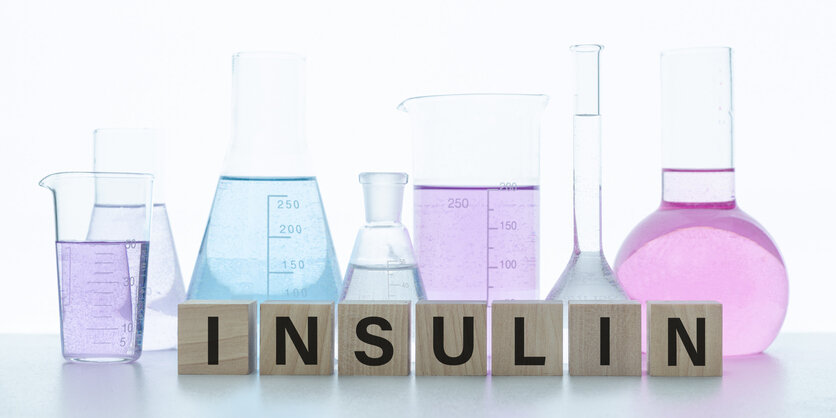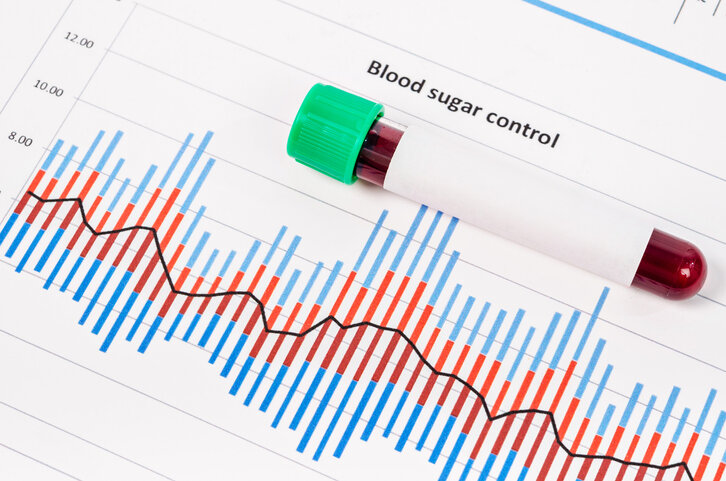Why We Should Pay Attention To Our Insulin Level
What is Insulin?
Insulin is an ancient molecule involved in energy processing. Evidence shows that it may go back over two billion years, first appearing in bacteria. (1) Insulin has many different effects, depending on the particular cell and situation. In fatty tissues and muscles, including the heart, it stimulates glucose (sugar) uptake. It causes the blood vessels of the heart to dilate. In the liver, it slows glucose production and increases glucose storage by stimulating glycogen production (glycogen stores glucose in chains). (2)
Insulin and Our Blood Vessels
As I mentioned earlier, insulin beneficially dilates our blood vessels. I use the term beneficially loosely here, as high blood pressure causes disease, and low blood pressure can kill. We want normal blood pressure, and flexible blood vessels enable better control. It is also an anti-inflammatory for the lining of our arteries. (3) When we are exercising, we want increased blood flow to help us move and get glucose where it is needed.
Insulin and Glucose
Most of the carbohydrates we eat end up as glucose in the body. The presence of glucose stimulates the production of insulin. In turn, insulin promotes the uptake of glucose by cells and its storage as glycogen. The insulin and glucose tend to balance out in healthy individuals. The state of balance is called homeostasis. Our diet and activity level influence our homeostasis. A high dose of sugar will result in a spike of insulin and remove the sugar from the blood into cells. Exercise causes an increase in cells to need energy. When cells need energy, they will increase their receptor activity and dilate blood vessels so that insulin has an easier time helping glucose into energy-depleted cells.
Insulin Sensitivity
The glycogen in our muscles rapidly depletes when we sprint or do high-intensity exercise, explaining why we can't run at full speed for very long. After intense exercise, our cells produce more insulin receptors, rapidly filling back up with energy. We call this rapid response insulin sensitivity.
Insulin Sensitivity is Healthy
In healthy individuals, our cells readily respond to insulin and quickly take up glucose. When we eat a meal containing carbohydrates, we convert them to glucose, stimulating us to secrete insulin from our pancreas. If we have recently exercised, much of the glucose will enter our muscles. If the muscles already have enough, the liver will take up the glucose and store it as glycogen. Either way, we can't hold much glycogen. After the liver and muscles are full, we convert the carbohydrates we eat to fat, which is our preferred energy storage method.
Blood Glucose Has Little Wiggle Room
A healthy blood glucose level is between 70 and 100mg/dl when not eating. Functional medicine prefers 75-85 as the optimal range. Incidentally, one teaspoon of sugar equals five grams, the amount that 100mg/dl represents. We can only carry one teaspoon in our blood safely; it is toxic otherwise. If we eat a high-carb meal, it can spike way up, forcing high insulin production to get it back down to healthy levels. High blood glucose is called hyperglycemia.
Conversely, if our blood glucose falls too low, we won't have the energy to perform tasks or maintain life if it goes too low. Low blood sugar, also called hypoglycemia, causes confusion and fatigue early and death later.
Insulin Resistance, Diabetes and Glucose
Diabetes is when our blood glucose level is routinely over 100. In type I, We don't produce enough insulin due to an autoimmune problem. Type I is also called juvenile diabetes. More common is type II diabetes, which affects ten percent of Americans. One-third have pre-diabetes. It is also called adult-onset diabetes.
As I mentioned earlier, insulin beneficially dilates our blood vessels. The problem is that glucose damages our blood vessels and other parts of the body, including nerve damage and pain, kidney disease and failure, blindness, and heart disease. With type II diabetes, the body produces insulin, but it is not enough to effectively keep up, and blood sugar rises. This supply and demand mismatch leads to insulin resistance and abnormal glucose metabolism. (4) Because diabetes is so destructive and common, your doctor will routinely measure your blood glucose and warn you if it is too high.
High Insulin is a Great Early Warning Sign For Disease
Because insulin resistance precedes diabetes for the reasons I just mentioned, measuring blood insulin levels is a great idea. Before we become diabetic, we may have normal blood glucose levels because we produce more and more insulin as we get less and less sensitive to its effects. In the initial stage of insulin resistance, only insulin is high as we can still maintain blood sugar with high levels of insulin.
Later on, no amount of insulin is enough to lower blood glucose to safe levels. At this point, it is too late; diabetes has set in with all of its dangers.
Causes of Insulin Resistance
Industrialized diets. A bagel contains fifty grams of processed carbohydrates and is broken down rapidly into ten teaspoons of sugar in our blood. More than one teaspoon of glucose in our entire bloodstream is dangerous, so ten is pushing it. But eating bagels and large sandwiches, not to mention donuts and chips, is common in the industrialized West.
Physical inactivity. If we are inactive, our liver and muscles do not use their stored glycogen, and we must store excess carbohydrates as fats. Inactivityeliminates two out of our three options for energy storage, effectively causing our liver and muscles to be insulin resistant.
Sleep deprivation. Sleep deprivation causes high cortisol. High cortisol leads to high blood sugar. Chronically high blood sugar leads to insulin resistance.
Chronic stress. Chronic stress causes high cortisol. High cortisol leads to high blood sugar. Chronically high blood sugar leads to insulin resistance. If this sounds familiar, realize that lack of sleep is a stress on the body.
Environmental toxins. Phthalates, BPA, and numerous other toxins correlate to insulin resistance. (5) For more information, see this post.
Disrupted gut germs. Disruptions in our gut and urinary microbiome (dysbiosis) may reshape our protective gut barrier and energy metabolism, causing insulin resistance. (6)
What You Can Do Now
Diet. Eat paleo-type whole foods devoid of processed carbohydrates and industrial seed oils.
Take care of your stress.
Make sure you are not sick. See a functional medicine doctor. Things like dysbiosis and SIBO may produce few symptoms.
In Closing
Another huge sign you are in the danger zone is excessive fat. If you are storing too much fat, you may be insulin resistant or heading for it. The things I listed above should all lead to fat loss and many other healthful benefits. Trying to lose fat without healthy activities will fail in the end. Starving yourself while choosing unhealthy foods and leading a stressful life just won’t work.










